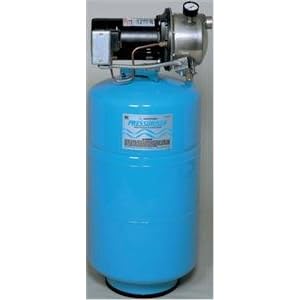Good morning all,
I'm hoping there may be some (semi) pro plumbers on here that could weigh in on my situation.
My house has an Amtrol RP-15HP booster pump setup. Our city water pressure is just below 15psi and this thing makes a world of difference.

A few weeks ago it began spitting air and the duty cycle went down to about 1 second on/2 seconds off. The landlord sent a plumber out and diagnosed it as a blown air bladder in the pressure tank.
He is really dragging his feet on this (almost 2 months now) and I just want to fix the situation. I am unable to come across a replacement tank (looks like they went out of production), so I'm looking to replace it.
I found these units:
http://www.freshwatersystems.com/p-4441-grundfos-mq3-35-230v-34-hp-pressure-booster-pump.aspx
Is this going to do the same thing I want? I'm curious how effective it could be without a large holding tank, but maybe these are more efficient and don't need it?
If I'm going to spend $500 for a new tank, I might as well switch over to something that is more efficient.
Thanks for any help!
--Andy
Arnold, MD
I'm hoping there may be some (semi) pro plumbers on here that could weigh in on my situation.
My house has an Amtrol RP-15HP booster pump setup. Our city water pressure is just below 15psi and this thing makes a world of difference.

A few weeks ago it began spitting air and the duty cycle went down to about 1 second on/2 seconds off. The landlord sent a plumber out and diagnosed it as a blown air bladder in the pressure tank.
He is really dragging his feet on this (almost 2 months now) and I just want to fix the situation. I am unable to come across a replacement tank (looks like they went out of production), so I'm looking to replace it.
I found these units:
http://www.freshwatersystems.com/p-4441-grundfos-mq3-35-230v-34-hp-pressure-booster-pump.aspx
Is this going to do the same thing I want? I'm curious how effective it could be without a large holding tank, but maybe these are more efficient and don't need it?
If I'm going to spend $500 for a new tank, I might as well switch over to something that is more efficient.
Thanks for any help!
--Andy
Arnold, MD

